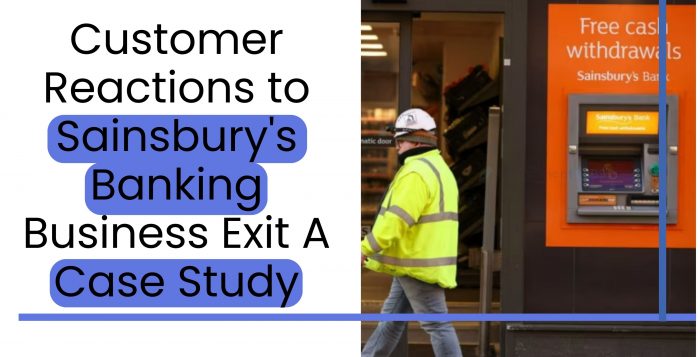Customer Reactions to Sainsbury’s Banking Business Exit A Case Study
In a dynamic financial landscape, the decision of a major player like Sainsbury’s to exit its core banking business sends ripples through the industry. This article dives into a comprehensive case study that explores the nuanced and multifaceted response of consumers to Sainsbury’s exit from the banking business.
The Background
Sainsbury’s, a well-established name in the retail and grocery sector, ventured into banking as part of its diversification strategy. Over the years, the bank offered several financial products, including savings accounts, loans, and credit cards, often tied to retail company loyalty programs.
However, recent changes in the financial sector and strategic considerations prompted Sainsbury’s to take the bold decision to exit its core banking operations. The move left consumers, who had grown accustomed to integrated banking assignment writing services, reeling from emotions and uncertainty.
Initial Reaction
As news of Sainsbury’s exit from core banking broke, consumers were quick to express their initial reactions. Social media platforms became a forum for conversation, highlighting a spectrum of emotions with the rise of online conversations. Some customers expressed surprise, while others expressed concern about the impact on their current accounts and ongoing financial commitments.
The Emotional Connection
The case study describes the emotional connection of customers with Sainsbury’s banking. The integration of banking services with supermarket loyalty programs and discounts created a unique customer experience. For many, Sainsbury’s was not just a bank but a one-stop shop for both everyday needs and financial needs.
This emotional connection was evident in the expressions of emotion on social media, where customers shared personal stories about their banking experiences with Sainsbury’s. Some expressed dismay at the potential loss of privileges and convenience, highlighting the importance of emotional ties in the banking sector.
Navigating Uncertainty
One of the key aspects explored in the case study is how customers deal with uncertainty arising from Sainsbury’s exit. Questions about the fate of savings accounts, loan agreements, and credit cards are on consumers’ minds. This study analyzes how Sainsbury’s delivered these changes, by examining the effectiveness of messaging in addressing customer concerns and providing clarity.
Comparative Analysis
To provide a broader perspective, the case study includes a comparative analysis of customer reactions to similar exits from other major players in the banking industry. Understanding how customers responded in comparable situations helps contextualize the uniqueness of Sainsbury’s case and identifies patterns that may be prevalent across the industry.
Changes in Customer Behavior
As the case study unfolds, it examines the changes in consumer behavior after Sainsbury’s exit from the banking business. Did customers move to other financial institutions? How did they adapt to the loss of integrated services? Insights into these behavioral changes shed light on consumers’ flexibility and adaptability in response to significant disruptions in their banking relationships.
Lessons Learned and Future Implications
The concluding section of the case study summarizes the key lessons learned from Sainsbury’s exit from the banking business. These insights go beyond the immediate issue, offering valuable considerations for businesses considering strategic changes in the financial sector. Additionally, the article discusses the potential long-term implications for Sainsbury’s reputation and customer trust.
Conclusion
Consumer reactions to Sainsbury’s exit from the banking business provide a compelling case study in terms of finance, consumer sentiment, and strategic decision-making. As the financial industry continues to evolve, understanding the dynamics of customer response to such critical decisions becomes imperative for businesses that want to navigate change while maintaining customer loyalty and trust.



